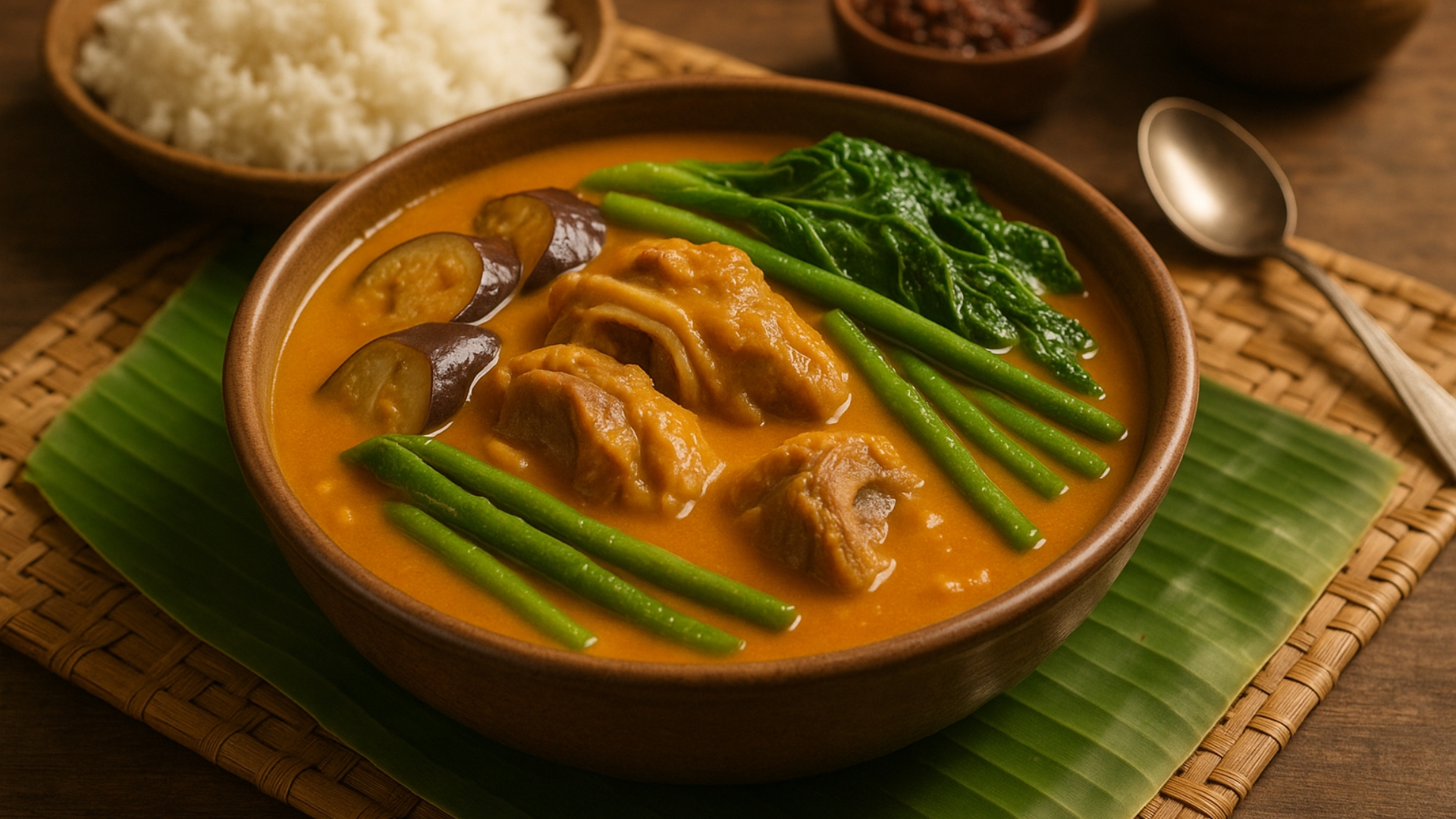
If Filipino dishes were a royal court, Kare-Kare would be the elegant queen in gold. She’s rich, thick, and indulgent. She doesn’t shout like Sinigang or crackle like Lechon. She glides in with grace, coats your spoon in peanut sauce, and makes you wonder why you ever doubted vegetables.
At first glance, Kare-Kare looks calm and quiet. But give it one bite, especially with a scoop of bagoong, and it turns into a flavor bomb.
So what’s the story behind this creamy, savory dish that looks like a stew but tastes like something you could eat with a spoon straight out of the pot?
A Rich History, Literally
The exact origin of Kare-Kare is still debated. Some say it dates back to pre-colonial times, with indigenous people making peanut-based stews long before the Spanish came. Others believe it came from the Moro elite of Southern Luzon, known for their lavish feasts and use of spices and nuts in cooking.
Another theory says that Kare-Kare was introduced by Indian sepoys who settled in the Philippines during the British occupation in the 1700s. Their curry dishes may have evolved into the peanut-based stew we know today.
Wherever it came from, one thing is clear: Kare-Kare became a staple in the Filipino kitchen and a star on the dining table. It’s often saved for special occasions, not because it’s hard to love, but because it takes time, care, and a lot of stirring.
Where It’s Popular
Kare-Kare is most associated with Luzon, especially Pampanga, which is often considered the culinary capital of the Philippines. Kapampangans are known for taking traditional Filipino food and elevating it to art, and their Kare-Kare is no exception.
But really, this dish has spread its peanuty influence across the whole country.
What’s in Kare-Kare?
- Oxtail or beef shanks, sometimes with tripe or pork hocks
- Ground roasted peanuts or peanut butter
- Toasted rice flour as a thickener
- Annatto seeds for that orange glow
- Vegetables like banana heart, eggplant, string beans, and pechay
- Bagoong alamang (fermented shrimp paste) served on the side
The stew itself is mild, nutty, and comforting. The bagoong gives it that salty, funky contrast that makes each bite explode with flavor.
Kare-Kare Variations You Might Not Know
1. Classic Oxtail Kare-Kare
The most traditional version. Uses oxtail and sometimes tripe for that rich, gelatinous texture. Served with a mountain of rice and a side of bagoong that disappears way too fast.
2. Beef Kare-Kare
A more accessible version that swaps oxtail for beef brisket or shank. It’s still flavorful, just easier to cook and eat.
3. Pork Kare-Kare
Often made with pata or pork belly. Slightly fattier, which makes the sauce even richer.
4. Seafood Kare-Kare
A modern twist using prawns, squid, mussels, or fish. It’s lighter, brinier, and a favorite for those who want the flavor without the heaviness of red meat.
5. Vegetable Kare-Kare
A budget-friendly or vegetarian option where the spotlight is on the veggies and the sauce. Pro tip: still pair it with bagoong.
Why Do Filipinos Love It So Much?
Because it’s luxurious, it feels like a reward after hours of cooking, it’s a celebration dish that shows you care, and because no one else makes peanut stew taste this balanced, this comforting, and this unforgettable.
Kare-Kare is one of those dishes you learn to love deeper the more you eat it. First, for the sauce. Then for the tenderness of the meat. And finally, for the way it brings people together around one beautiful pot.
Fun Facts to Flex at the Table
- The peanut sauce is often made from scratch, using roasted peanuts ground with rice flour. But many home cooks now use peanut butter, and honestly, no one’s complaining.
- The bright orange color comes from annatto seeds, not food coloring.
- You can buy instant Kare-Kare mix at grocery stores, but the homemade kind always wins in a taste test.
- Kare-Kare is often served in clay pots, which retain heat and give that warm, comforting vibe.
Kare-Kare Is a Labor of Love
It’s not the kind of dish you whip up in ten minutes. It takes time. It takes stirring. It takes patience. But once it’s on the table, it speaks for itself.
Kare-Kare is rich, creamy, and unapologetically Filipino. It may not be loud in flavor, but with the right bagoong and a warm plate of rice, it becomes unforgettable.
